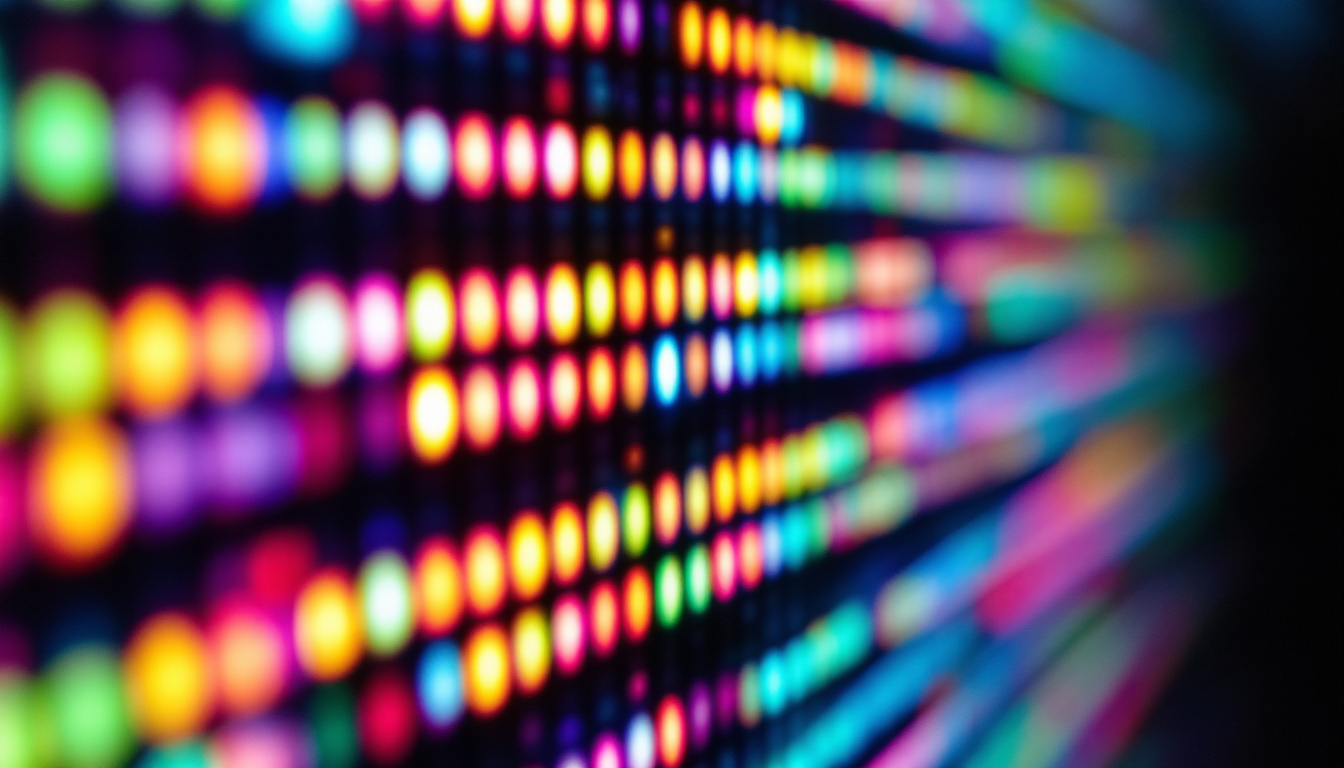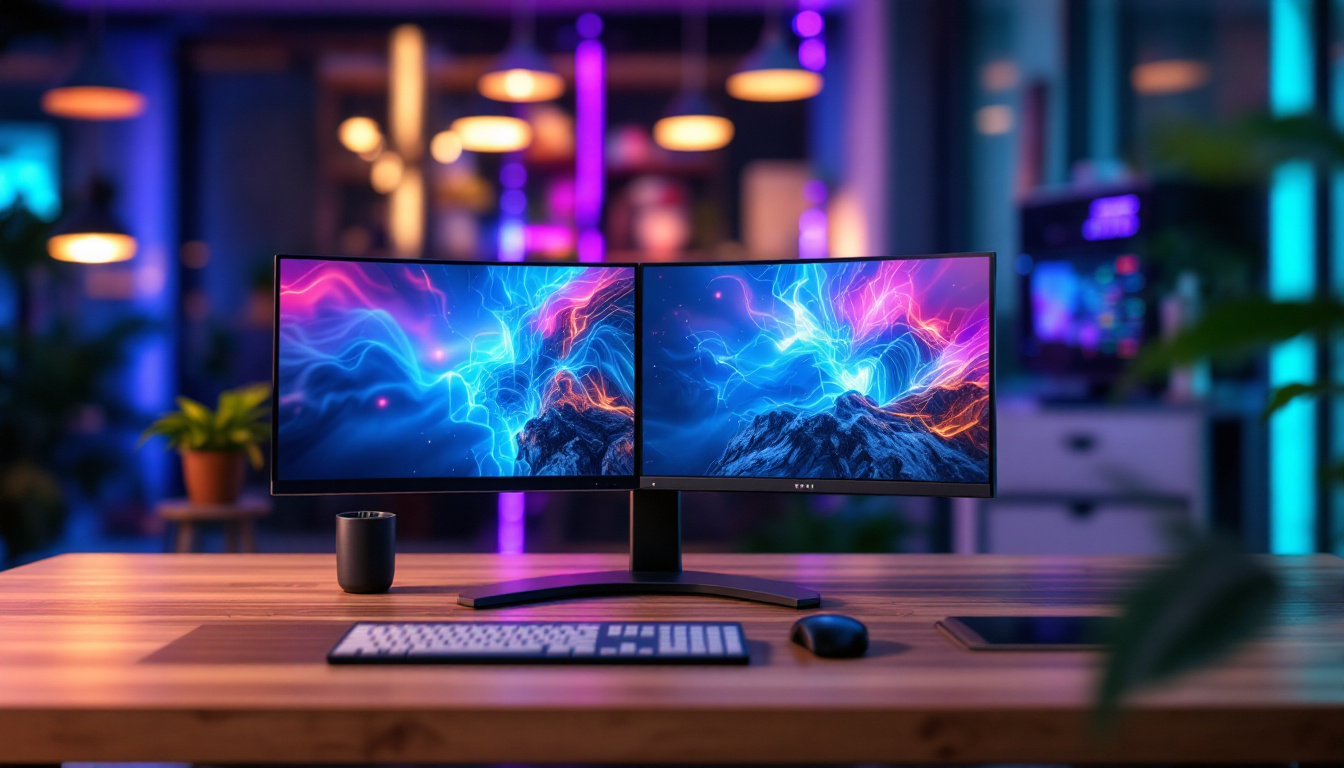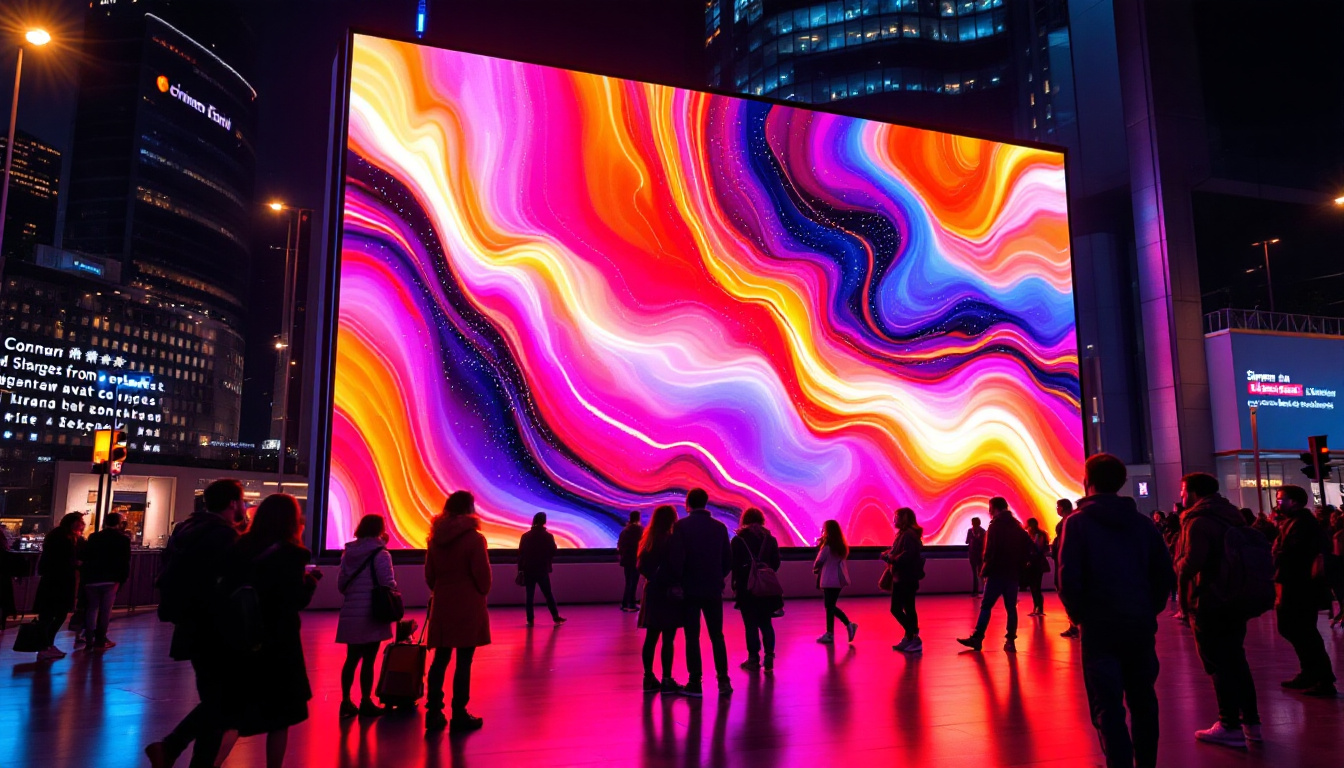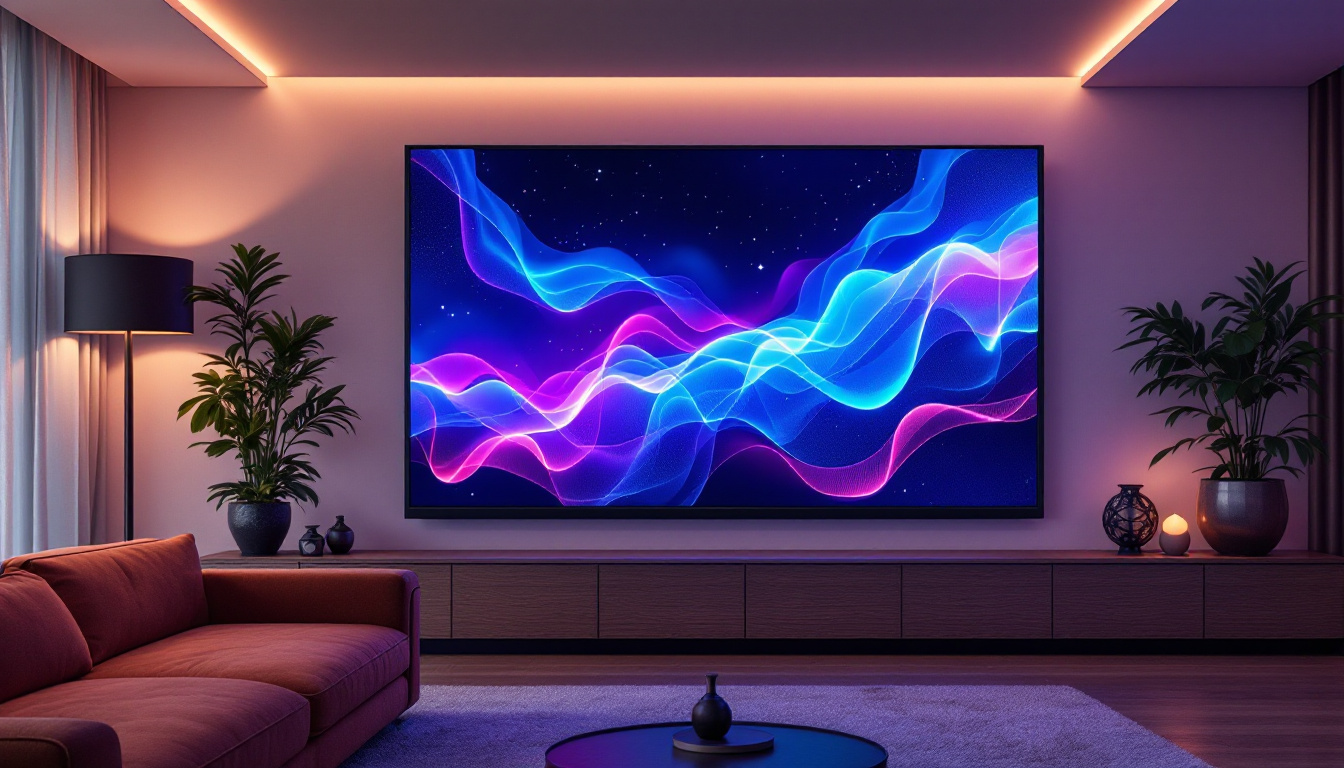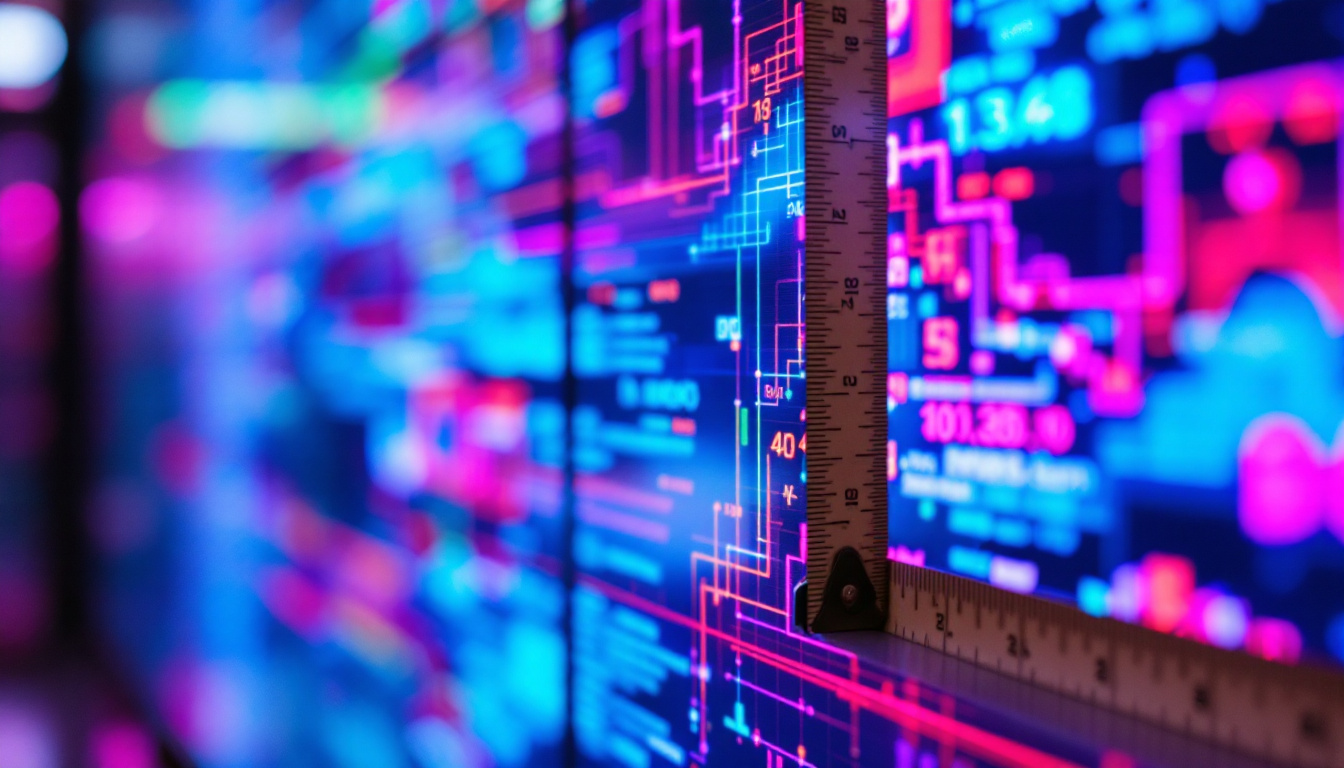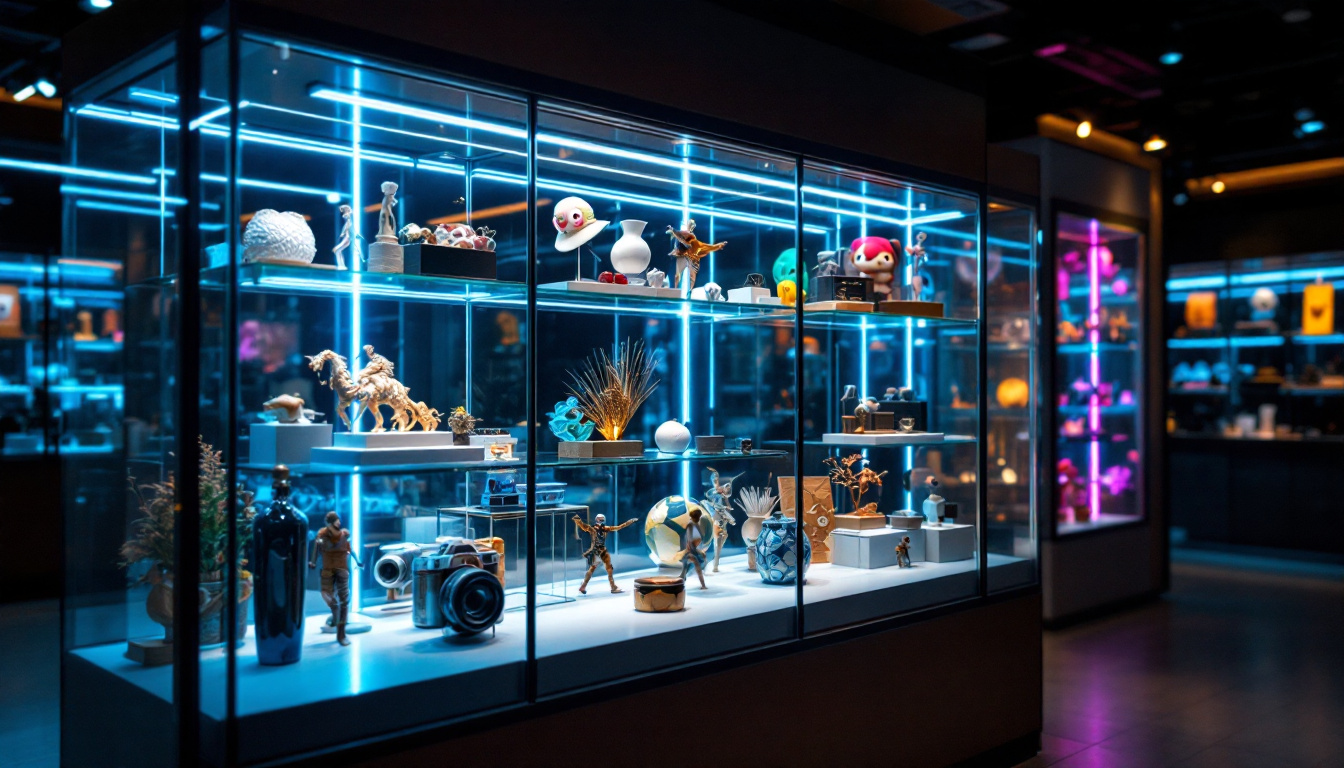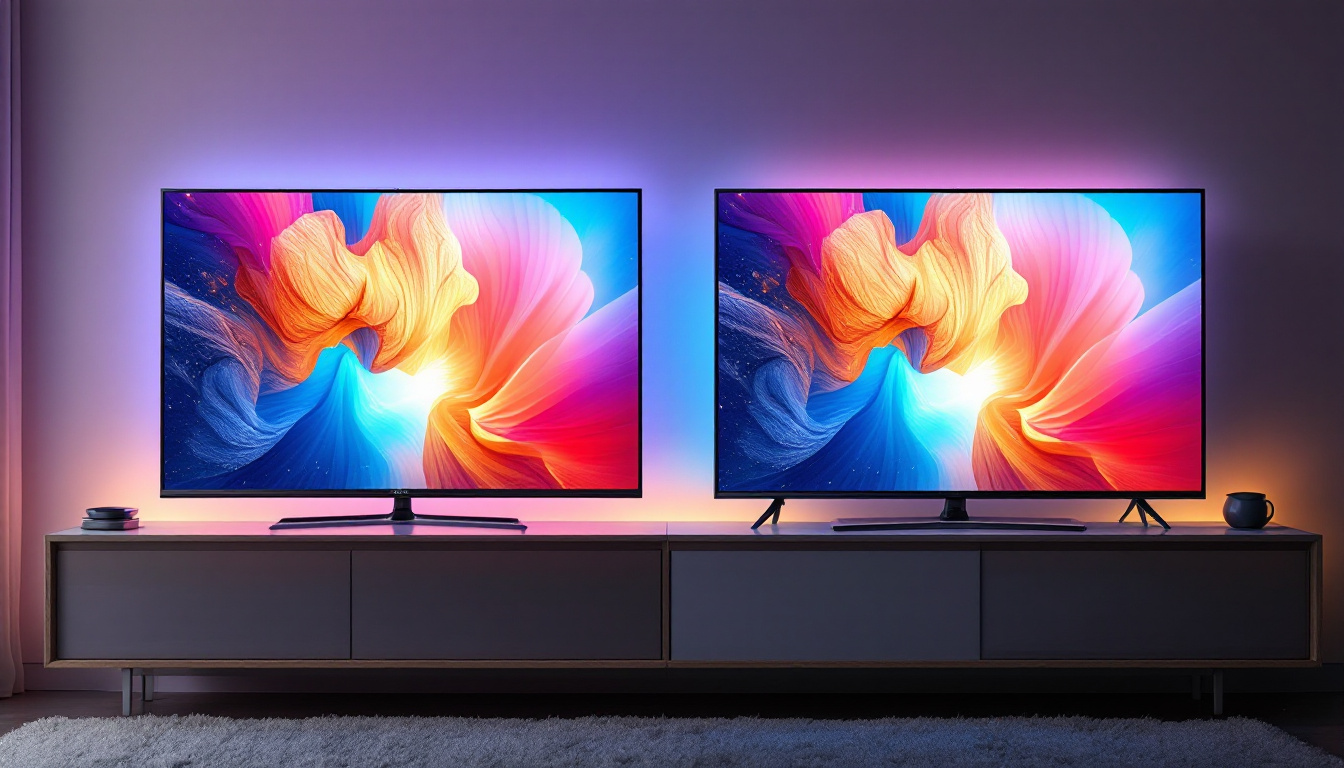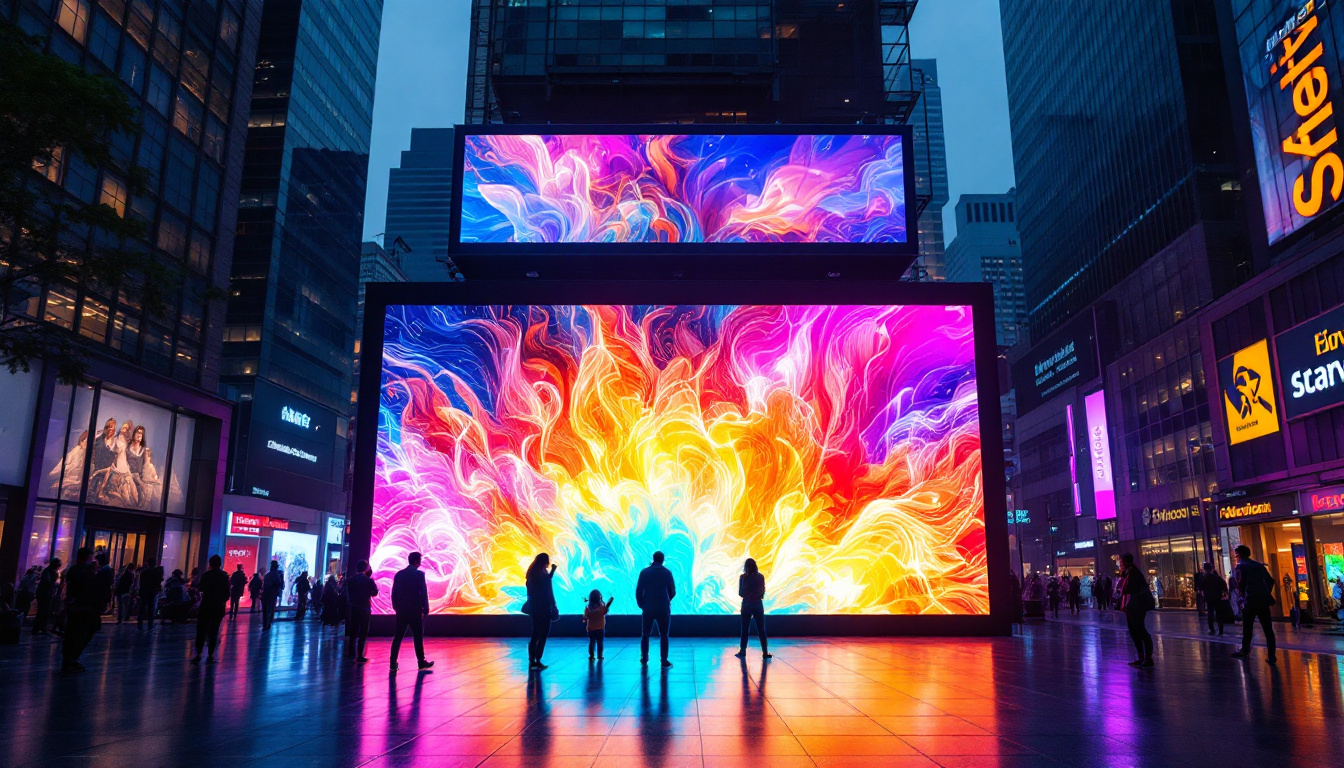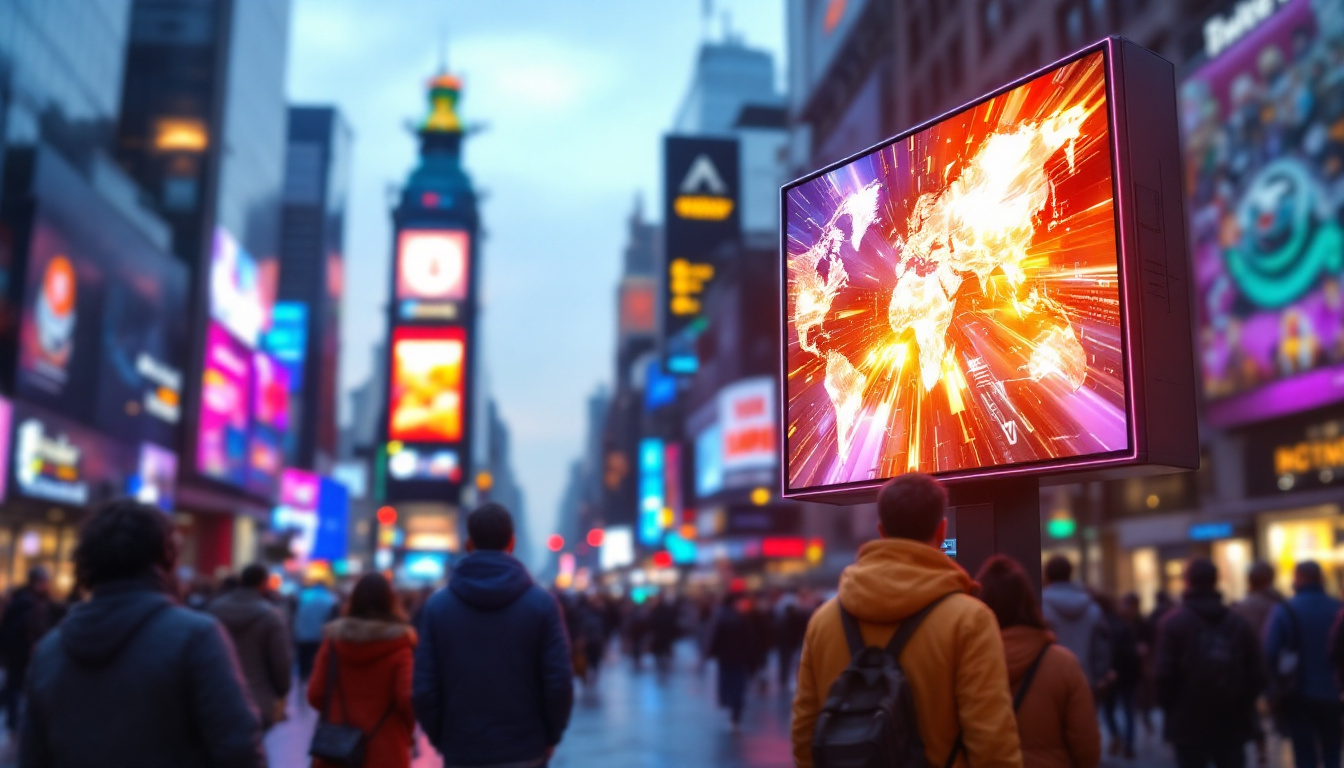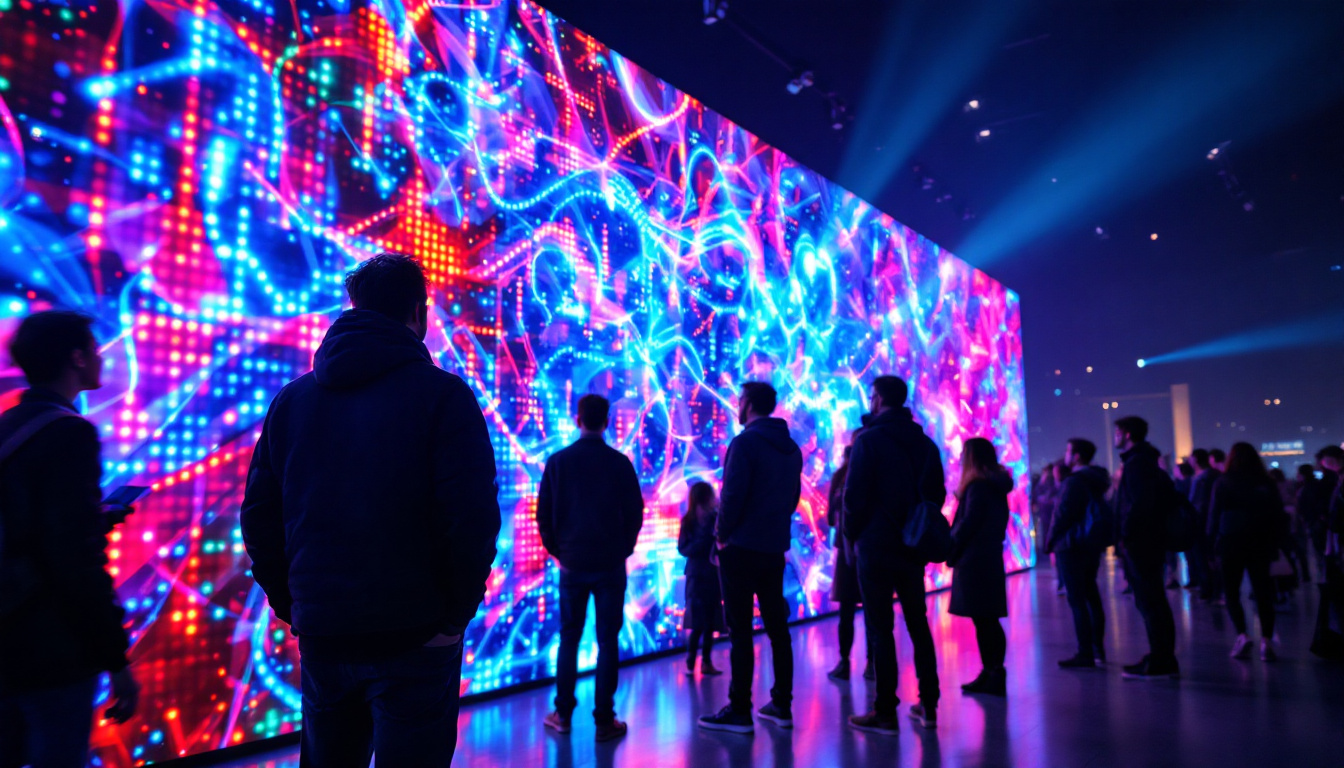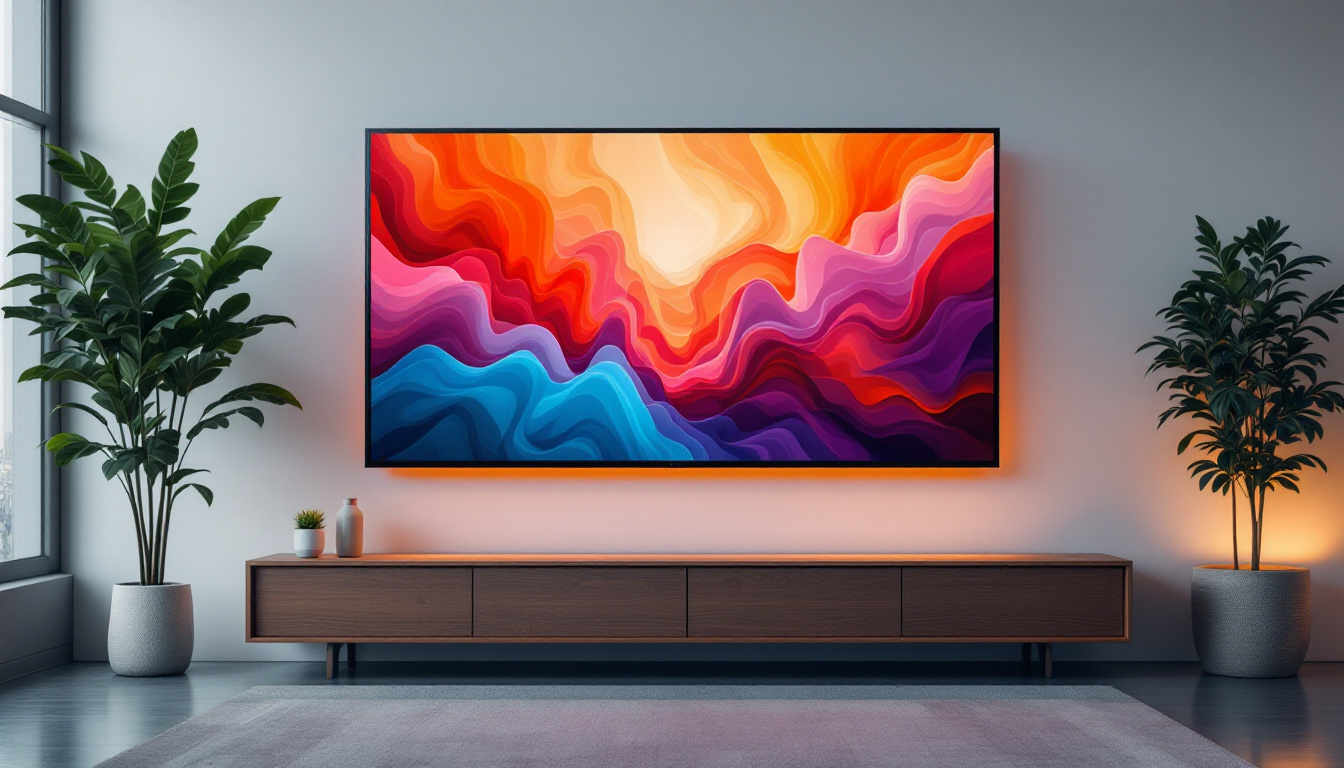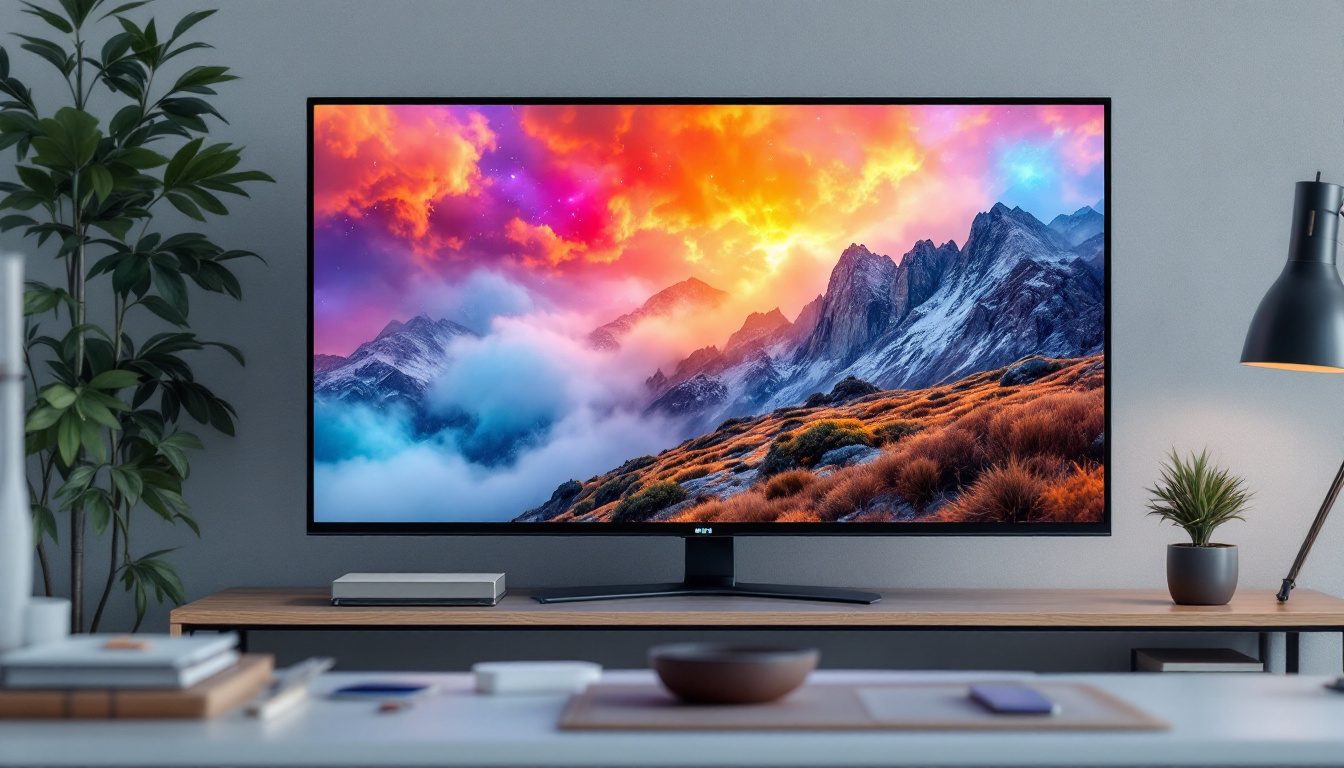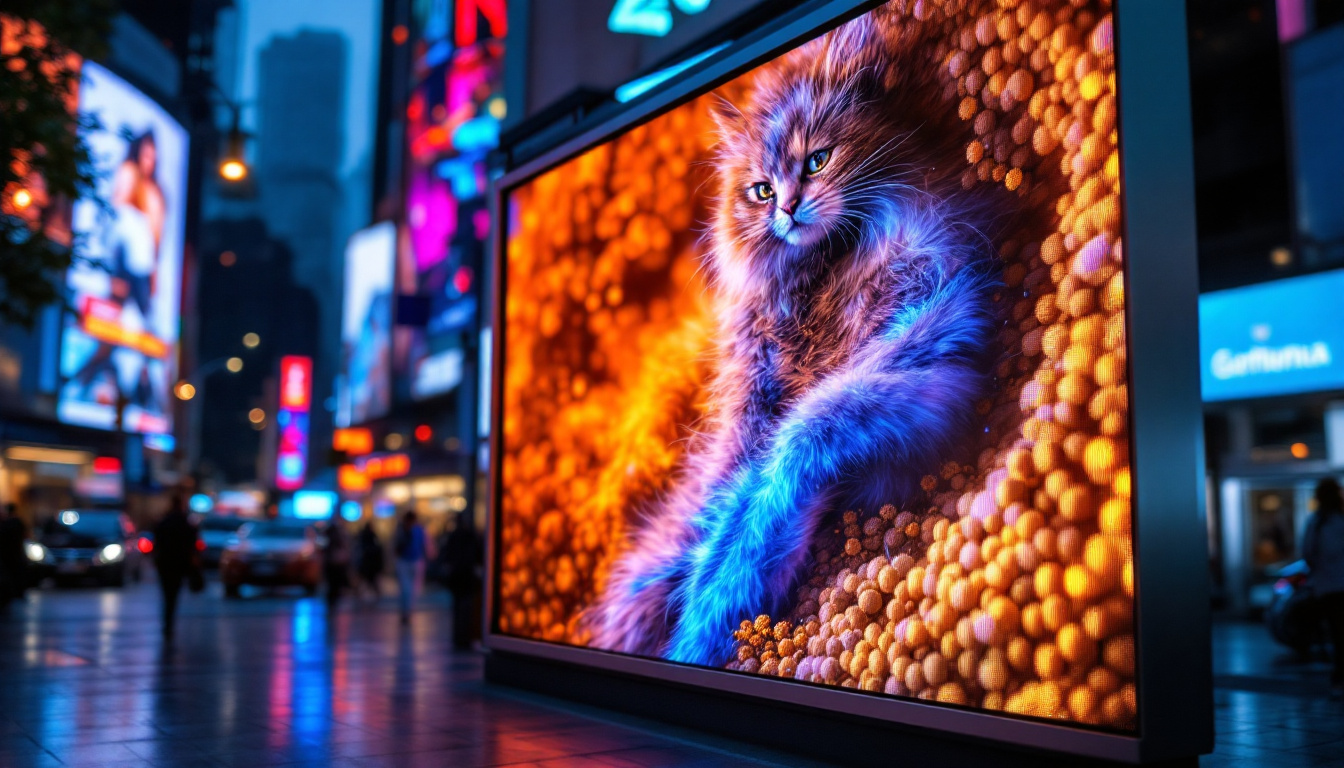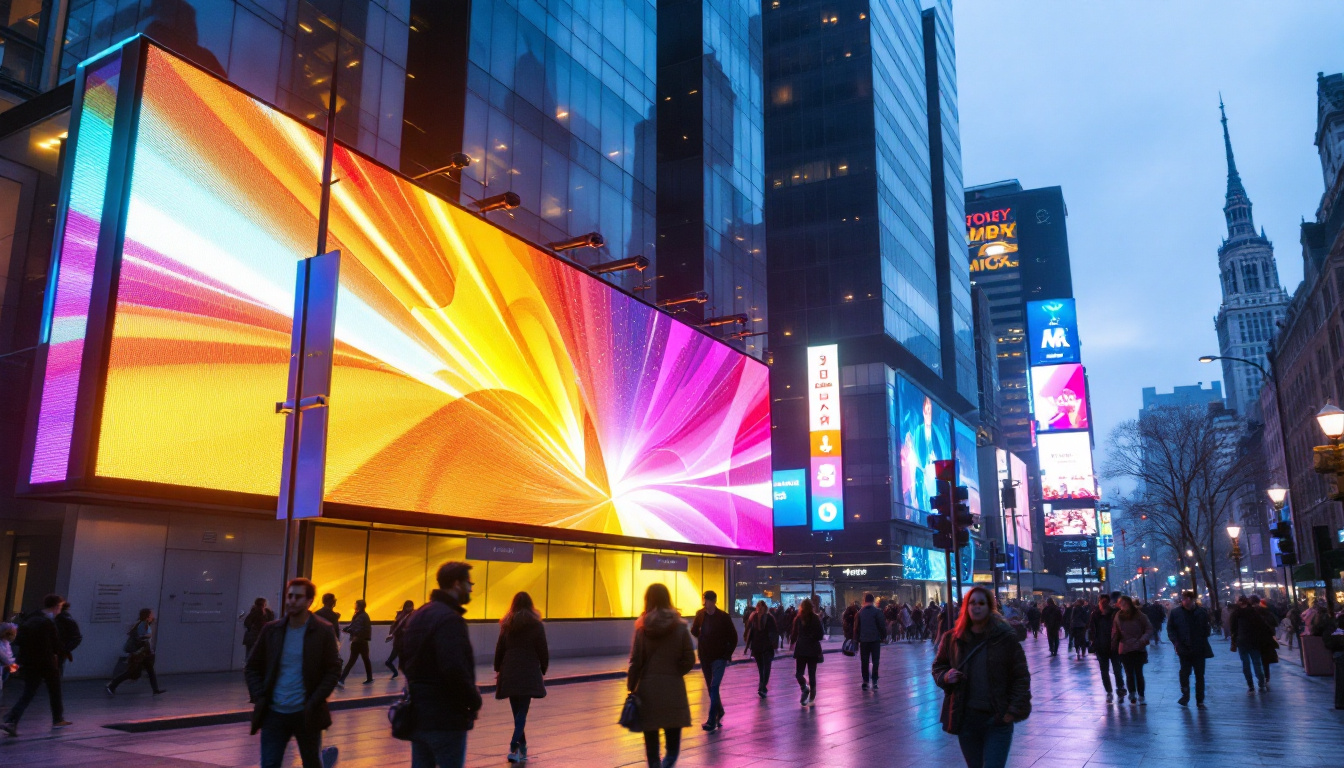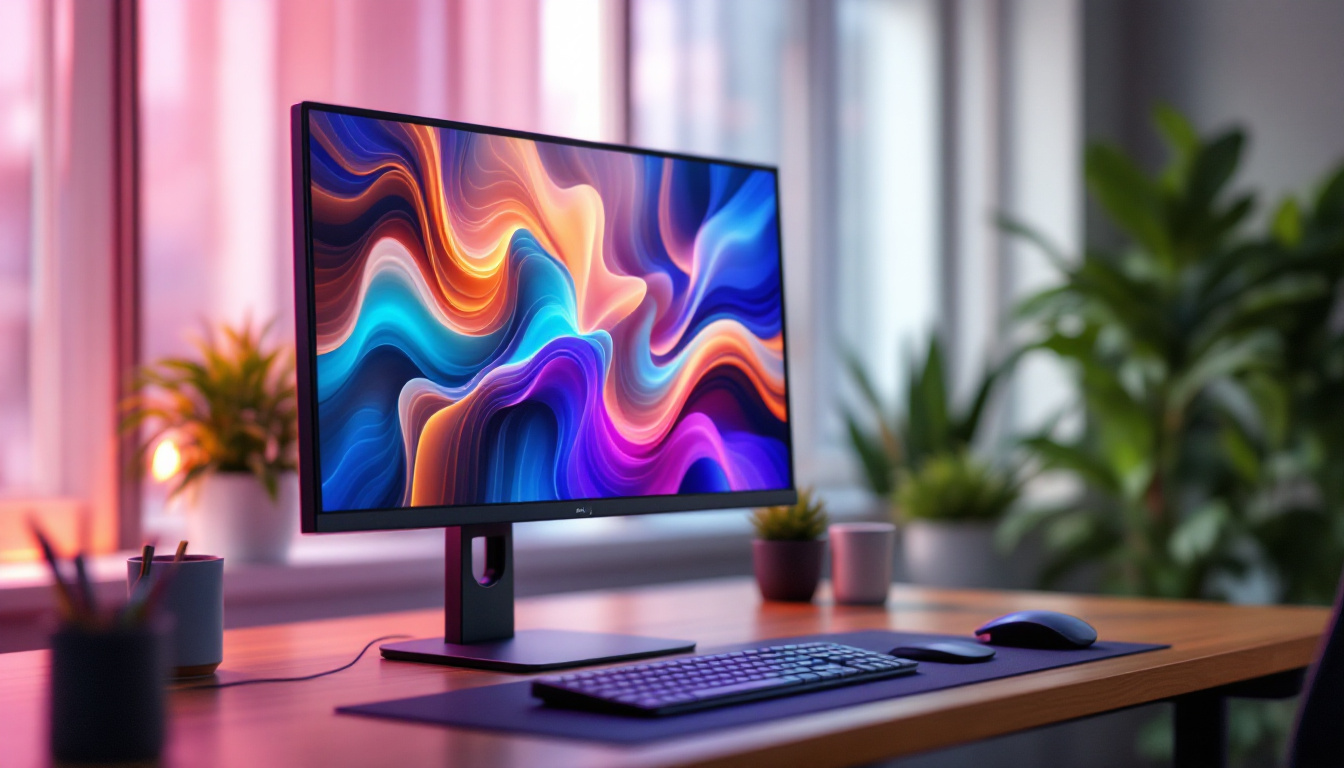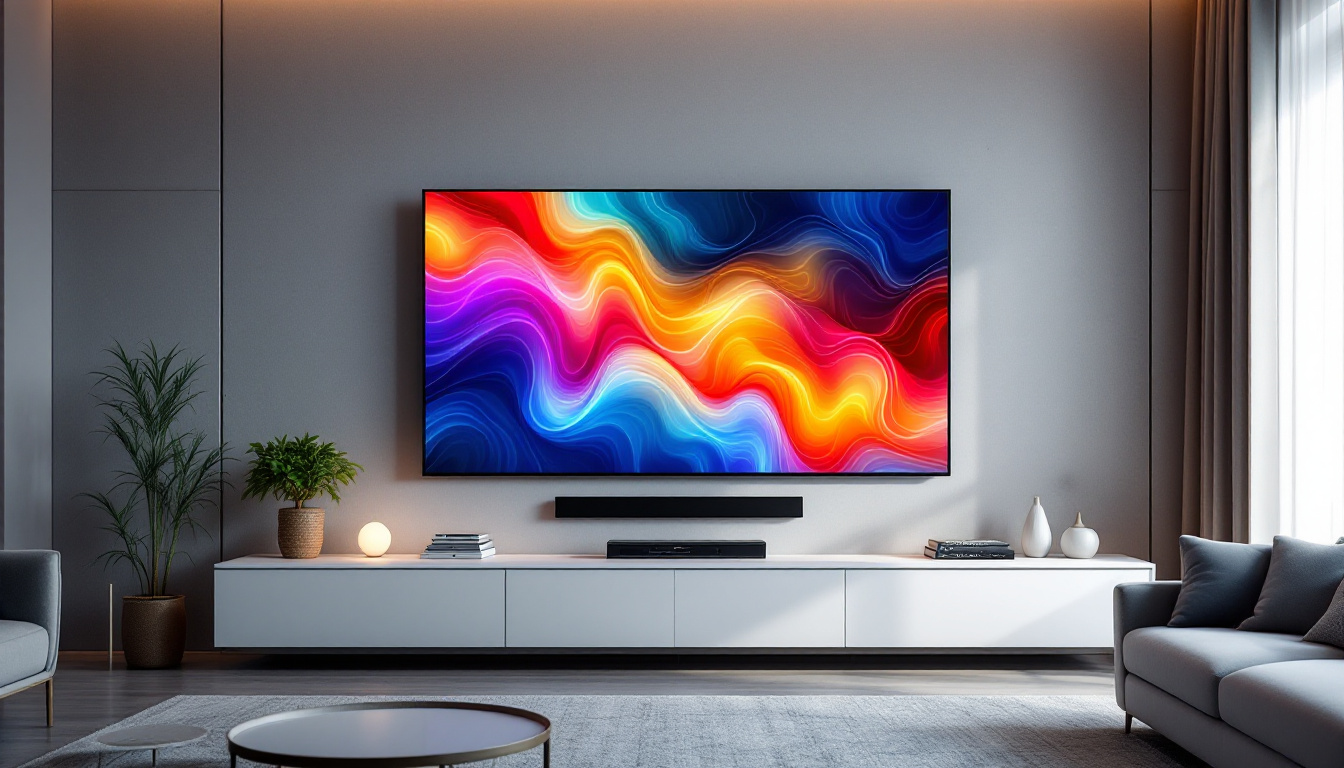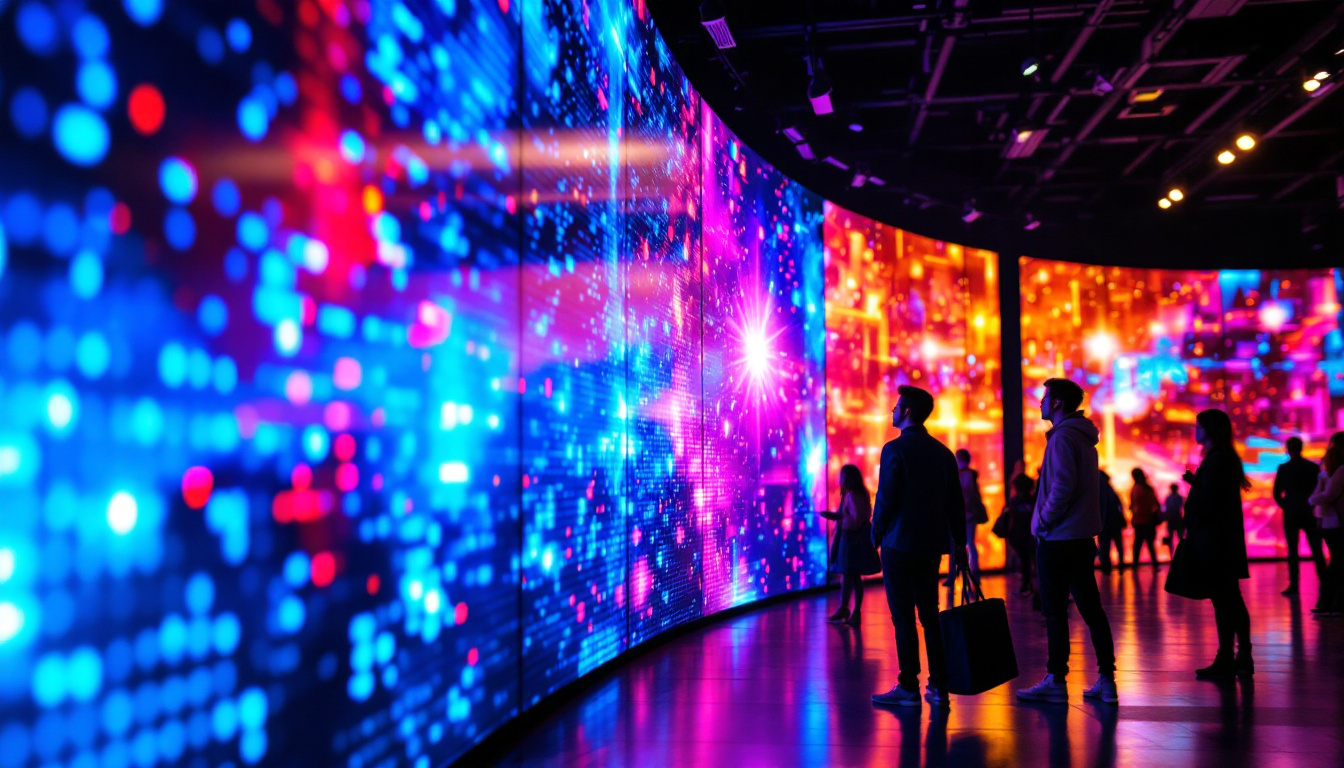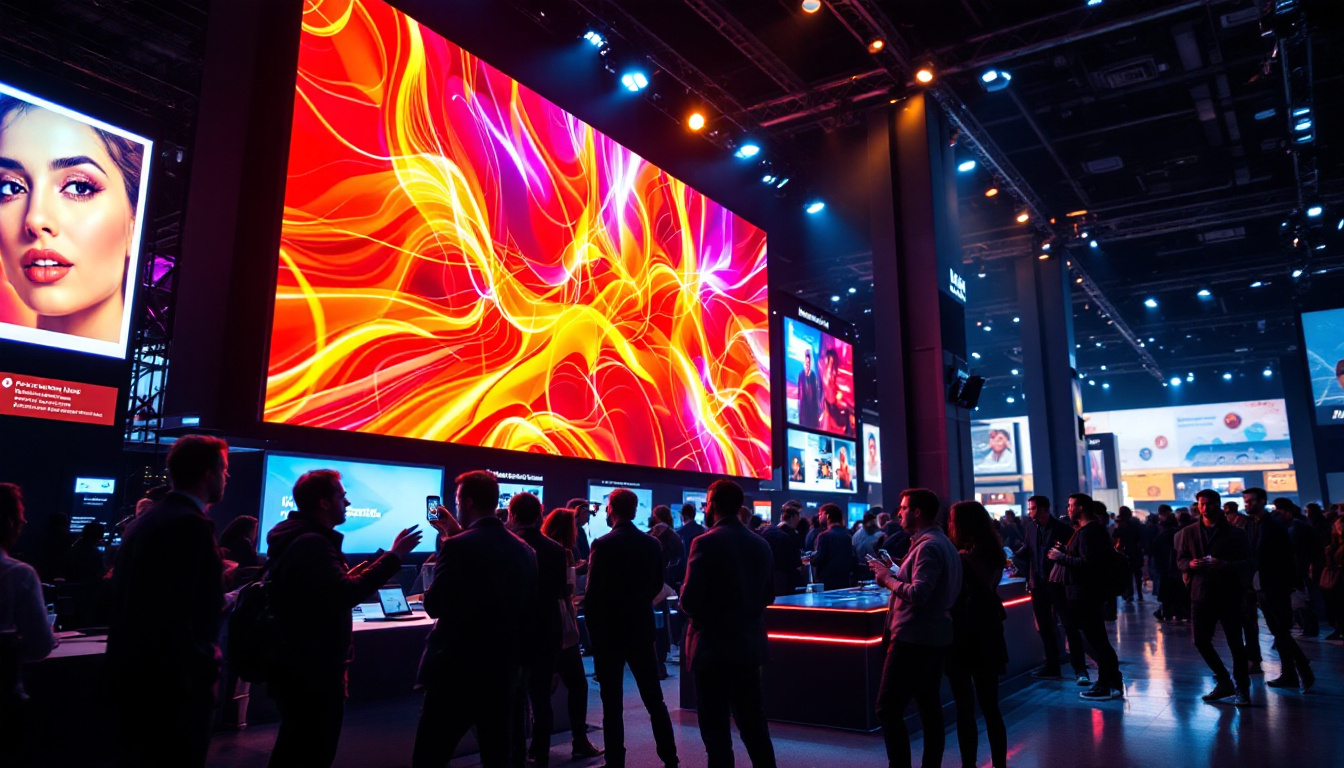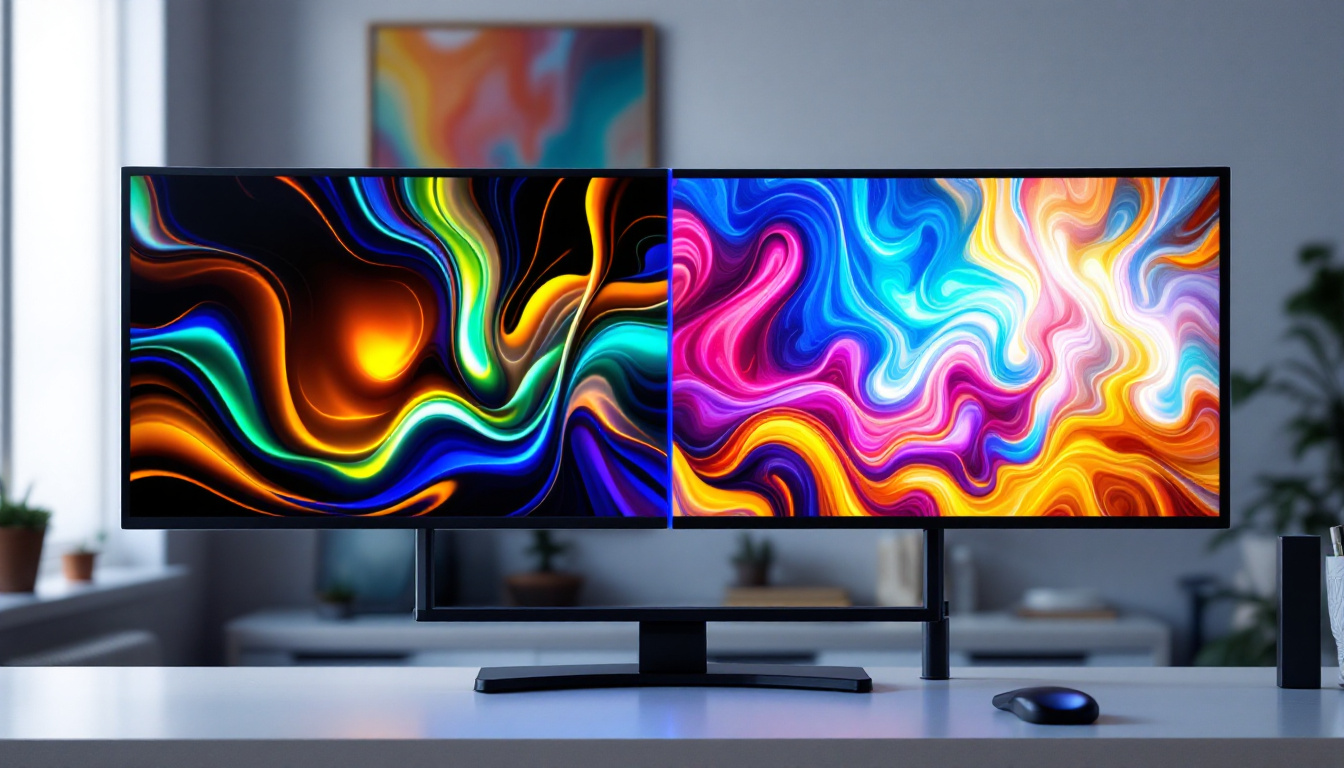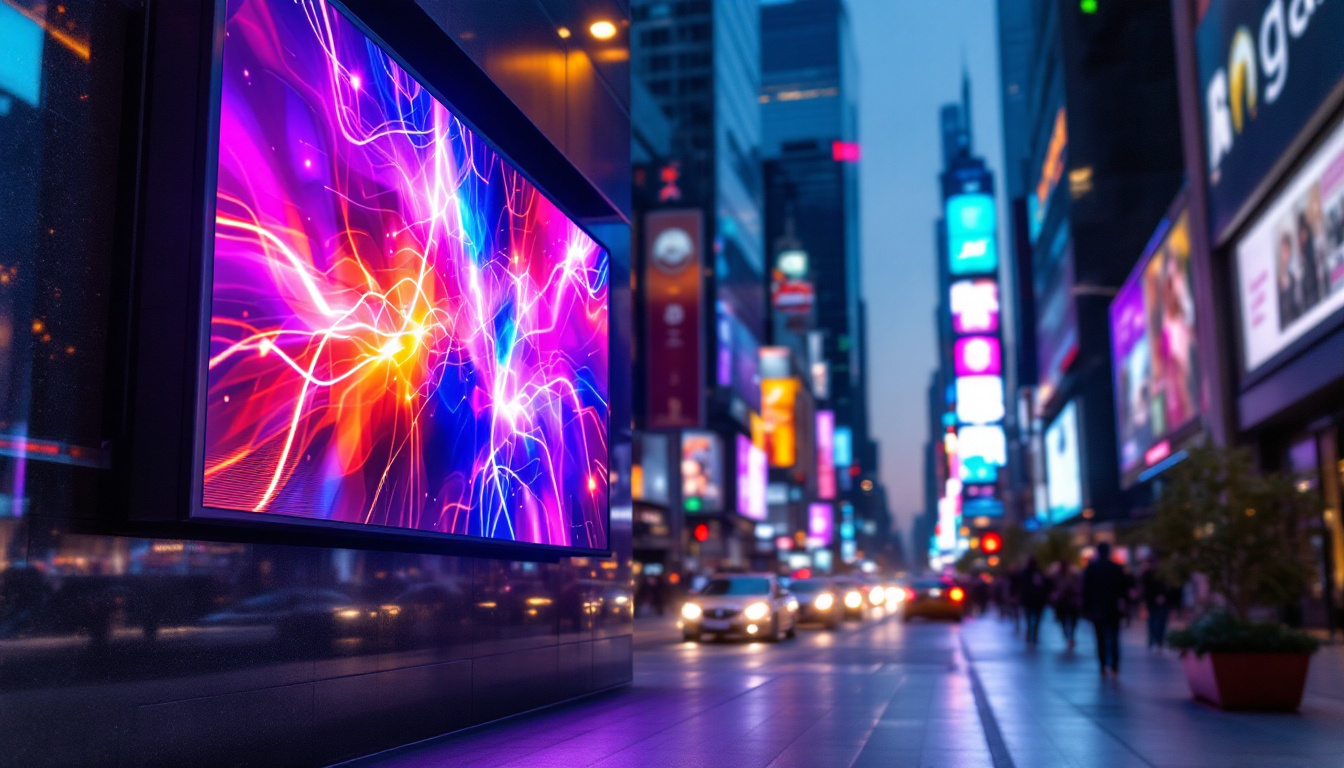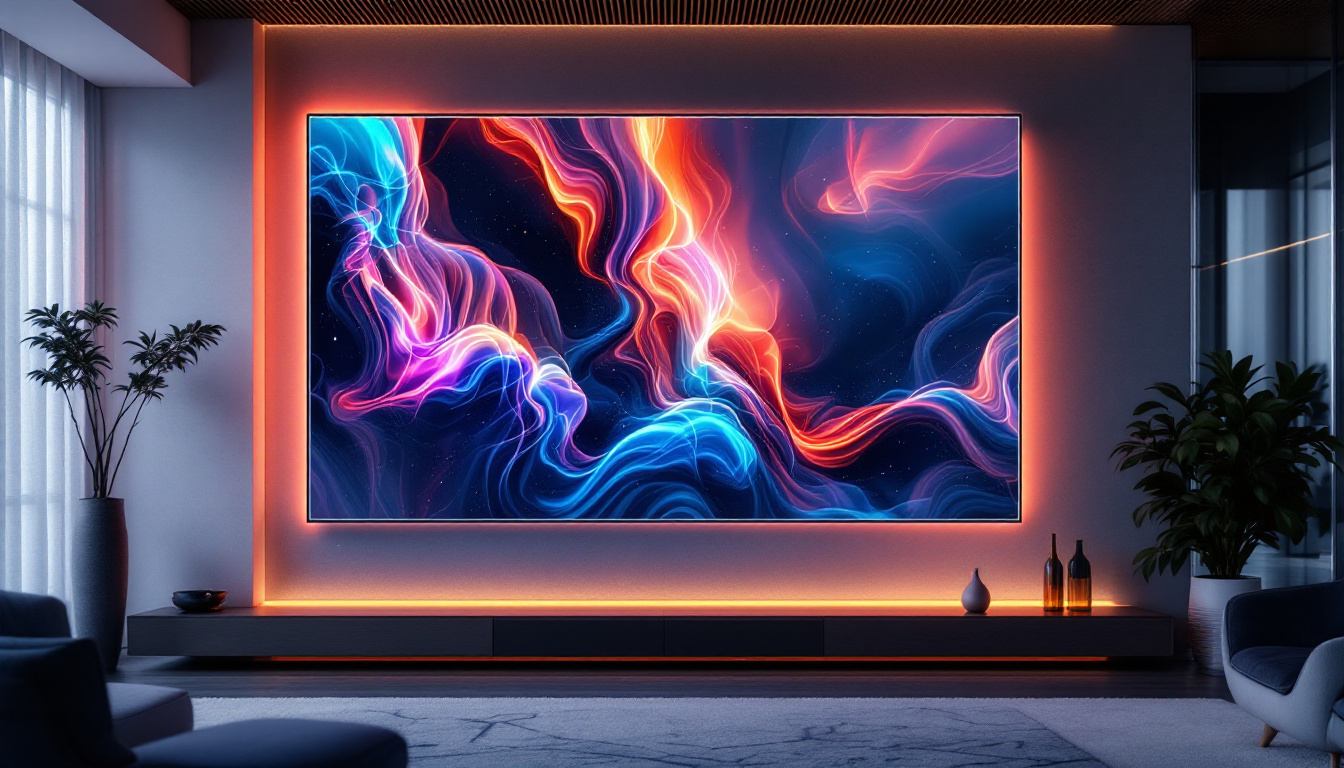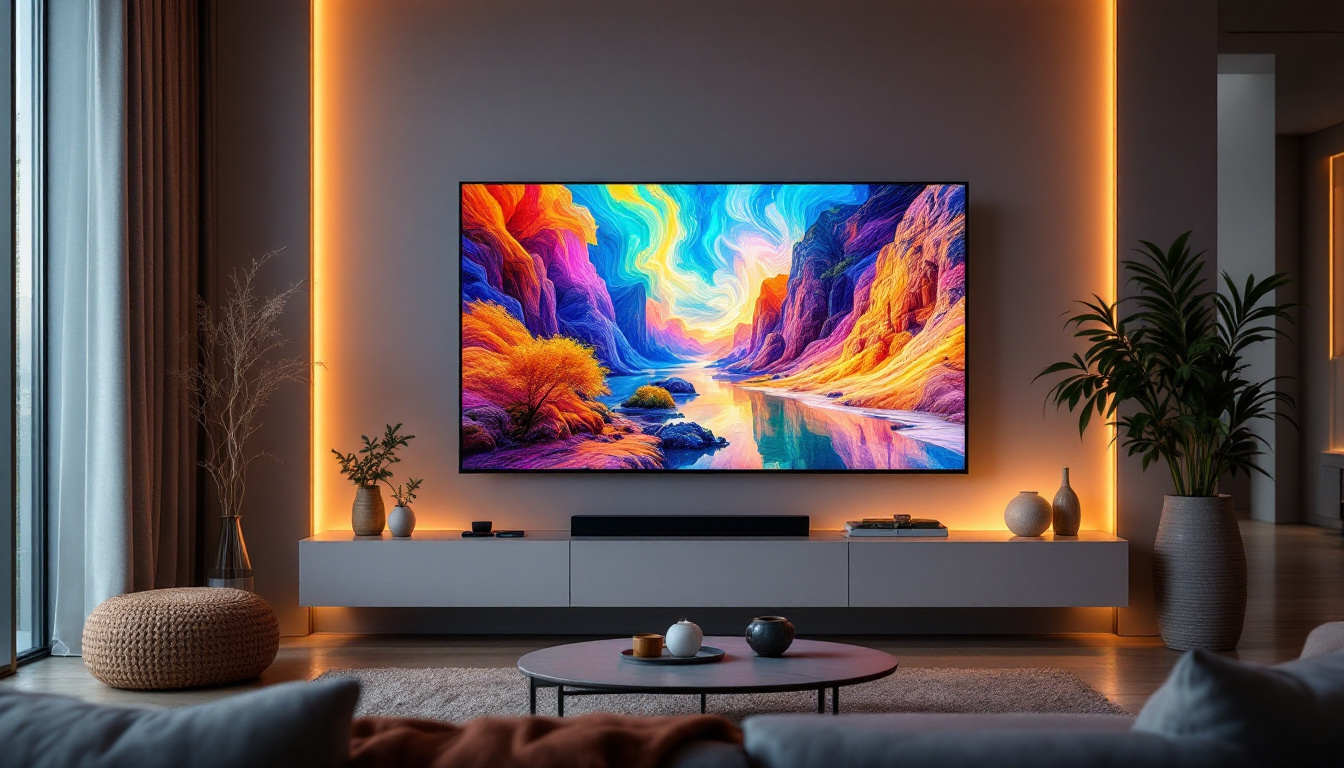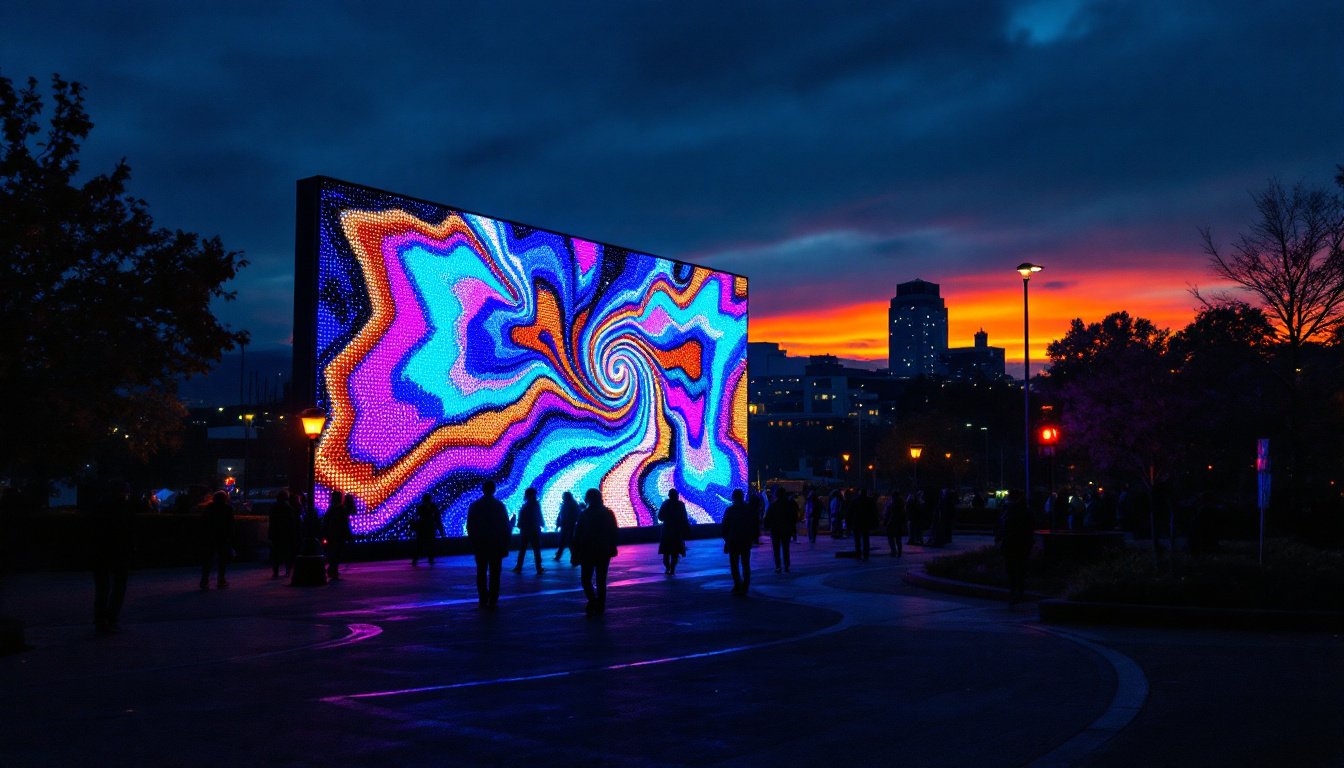In the rapidly evolving world of technology, LED displays have emerged as a cornerstone of modern visual communication. From large-scale outdoor billboards to sleek indoor screens, these displays are transforming how information is conveyed and experienced. Understanding the intricacies of LED technology, particularly the concept of millimeter visual, is essential for anyone interested in the future of visual media.
Understanding LED Technology
Light Emitting Diodes (LEDs) are semiconductor devices that emit light when an electric current passes through them. This technology has revolutionized the display industry due to its efficiency, longevity, and versatility. Unlike traditional incandescent bulbs, LEDs consume significantly less power and have a much longer lifespan, making them an eco-friendly choice. Furthermore, the compact size of LEDs allows for innovative designs that were previously unattainable with larger lighting technologies, enabling a new wave of creativity in both commercial and residential applications.
The Basics of LED Displays
LED displays are constructed using numerous individual LEDs arranged in a grid. Each LED can be controlled independently, allowing for precise color and brightness adjustments. This capability enables the creation of vivid images and videos that can be viewed from various angles and distances. The technology behind these displays has advanced to the point where they can now support high-definition resolutions, making them suitable for everything from large-scale billboards to small handheld devices. The ability to create dynamic content that can change in real-time adds another layer of versatility to their application.
There are two primary types of LED displays: direct view and backlit. Direct view displays consist of LED modules that are visible from the front, while backlit displays use LEDs to illuminate an LCD panel from behind. Both types have their unique applications and advantages, depending on the desired use case. For example, direct view displays are often used in sports arenas and concert venues, where bright, eye-catching visuals are essential, while backlit displays are commonly found in televisions and computer monitors, where they enhance the viewing experience with deeper blacks and vibrant colors.
Key Advantages of LED Displays
One of the most significant advantages of LED displays is their brightness. They can produce high levels of luminance, making them easily visible even in bright daylight. This feature is particularly beneficial for outdoor advertising and public information displays. The ability to maintain visibility in various lighting conditions ensures that messages reach their intended audience effectively, maximizing the impact of marketing campaigns and public service announcements.
Additionally, LED displays are known for their excellent color accuracy and contrast ratios. This capability allows for more engaging visuals, which can capture the audience’s attention more effectively than traditional display technologies. The rapid response time of LEDs also contributes to smoother motion rendering, which is crucial for video content. As a result, industries such as entertainment, retail, and education are increasingly adopting LED technology to enhance their visual communications, creating immersive experiences that resonate with viewers. Moreover, the durability of LEDs means they can withstand harsh environmental conditions, making them ideal for both indoor and outdoor applications, further solidifying their role in modern display solutions.
What is Millimeter Visual?
Millimeter visual refers to the pixel pitch of an LED display, which is the distance between the centers of two adjacent pixels. Measured in millimeters, this specification is crucial in determining the display’s resolution and viewing distance. A smaller pixel pitch indicates a higher resolution, allowing for more detailed imagery.
The Importance of Pixel Pitch
The pixel pitch directly impacts the quality of the visual experience. Displays with a smaller pixel pitch (e.g., 1.5mm) are suitable for close viewing distances, making them ideal for indoor environments like conference rooms or retail spaces. Conversely, larger pixel pitches (e.g., 10mm) are better suited for outdoor applications where viewers are typically farther away.
Choosing the right pixel pitch is essential for achieving the desired visual clarity and ensuring that the audience can appreciate the content being displayed. This consideration is particularly important for applications such as digital signage, where clarity and detail can significantly influence viewer engagement. A well-calibrated pixel pitch can also enhance the overall aesthetic appeal of the display, making it a focal point in any setting.
Applications of Millimeter Visual Technology
Millimeter visual technology is widely used across various industries, including advertising, entertainment, and corporate communications. In advertising, high-resolution displays can showcase products in stunning detail, attracting potential customers and enhancing brand visibility. These displays often utilize advanced color calibration techniques to ensure that the colors are vibrant and true to life, which can be a game-changer in competitive markets.
In the entertainment sector, millimeter visual displays are often employed in concerts and events, providing dynamic visuals that enhance the overall experience. These displays can create immersive environments, captivating audiences with vibrant colors and intricate designs. The technology allows for seamless integration with sound and lighting systems, resulting in a multisensory experience that keeps audiences engaged throughout the performance. Furthermore, the versatility of millimeter visual displays enables them to be configured in various shapes and sizes, allowing for creative setups that can transform any venue.
Corporate communications also benefit from millimeter visual technology. High-resolution displays in conference rooms can facilitate effective presentations, ensuring that all participants can see and understand the content being shared. The clarity provided by smaller pixel pitches allows for detailed graphs, charts, and images to be displayed without distortion, which is crucial for conveying complex information. Additionally, these displays can support interactive features, enabling real-time collaboration and engagement during meetings, which can lead to more productive discussions and decision-making processes.
Factors to Consider When Choosing an LED Display
Selecting the right LED display involves several considerations beyond pixel pitch. Understanding these factors can help ensure that the chosen display meets the specific needs of the application.
Brightness and Contrast Ratio
Brightness is a critical factor for LED displays, especially for outdoor applications. The display’s brightness level, measured in nits, determines how well it can be seen in various lighting conditions. A higher brightness level is essential for outdoor displays that need to compete with sunlight.
Contrast ratio, on the other hand, refers to the difference between the brightest and darkest parts of the image. A higher contrast ratio enhances the display’s ability to produce vivid colors and deep blacks, contributing to a more immersive viewing experience.
Viewing Angle
The viewing angle is another important consideration. It refers to the maximum angle at which the display can be viewed without significant loss of image quality. A wider viewing angle is advantageous for applications where viewers may be positioned at various angles relative to the display.
For instance, in a retail environment, a display with a wide viewing angle ensures that customers can see the content clearly from different positions in the store, maximizing engagement and impact.
Installation and Maintenance of LED Displays
Proper installation and maintenance are crucial for ensuring the longevity and performance of LED displays. Understanding the best practices for both can help maximize the investment in this technology.
Installation Best Practices
When installing an LED display, it is essential to consider the environment in which it will be placed. Factors such as ambient light, weather conditions, and mounting options should be evaluated to ensure optimal performance. For outdoor displays, weatherproofing and protection against environmental elements are vital.
Additionally, the display should be positioned at an appropriate height and angle to maximize visibility. Proper alignment and calibration during installation can significantly enhance the display’s effectiveness and ensure that it meets the intended purpose.
Maintenance and Care
Regular maintenance is key to preserving the performance of LED displays. This includes routine cleaning to remove dust and debris, which can affect brightness and clarity. It is also essential to monitor the display for any signs of malfunction, such as dead pixels or color inconsistencies.
Many manufacturers provide guidelines for maintenance, including recommended cleaning solutions and procedures. Following these guidelines can help extend the lifespan of the display and ensure that it continues to deliver high-quality visuals.
The Future of LED Displays
The future of LED displays looks promising, with ongoing advancements in technology paving the way for even more innovative applications. As the demand for high-quality visuals continues to grow, manufacturers are exploring new ways to enhance display performance and functionality.
Emerging Trends in LED Technology
One of the most exciting trends in LED technology is the development of flexible and transparent displays. These innovations open up new possibilities for creative applications, allowing for displays that can be integrated seamlessly into various environments.
Additionally, advancements in microLED technology promise to deliver even higher resolutions and improved energy efficiency. MicroLED displays consist of tiny individual LEDs that can produce stunning visuals while consuming minimal power, making them an attractive option for future applications.
Integration with Smart Technologies
As smart technologies continue to evolve, the integration of LED displays with IoT (Internet of Things) systems is becoming increasingly common. This integration allows for real-time data display and interaction, enhancing the user experience and enabling dynamic content updates.
For instance, in smart cities, LED displays can provide real-time information about traffic conditions, weather updates, and public transportation schedules, improving communication and accessibility for residents.
Conclusion
LED displays, particularly those utilizing millimeter visual technology, are at the forefront of modern visual communication. Their versatility, efficiency, and ability to deliver stunning visuals make them an essential tool for various applications, from advertising to corporate communications.
As technology continues to advance, the potential for LED displays will only grow. Understanding the intricacies of this technology, including pixel pitch, brightness, and maintenance, is crucial for anyone looking to leverage the power of LED displays effectively.
In a world where visual communication plays a pivotal role, investing in high-quality LED displays is not just a trend—it’s a necessity. The future of visual media is bright, and LED technology is leading the way.
Discover LumenMatrix LED Display Solutions
Ready to elevate your visual communication with the latest in LED technology? LumenMatrix offers a comprehensive range of LED display modules designed to bring your brand to life. Whether you’re looking for an Indoor LED Wall Display, a dynamic Outdoor LED Wall Display, or specialized solutions like Vehicle LED Displays and LED Sports Displays, LumenMatrix has you covered. Experience the future of visual engagement with our innovative Floor LED Displays, Custom LED Solutions, All-in-One LED Displays, and LED Transparent Displays. Embrace the revolution in digital signage and let LumenMatrix help you create unforgettable visual experiences. Check out LumenMatrix LED Display Solutions today and transform the way you communicate with your audience.

